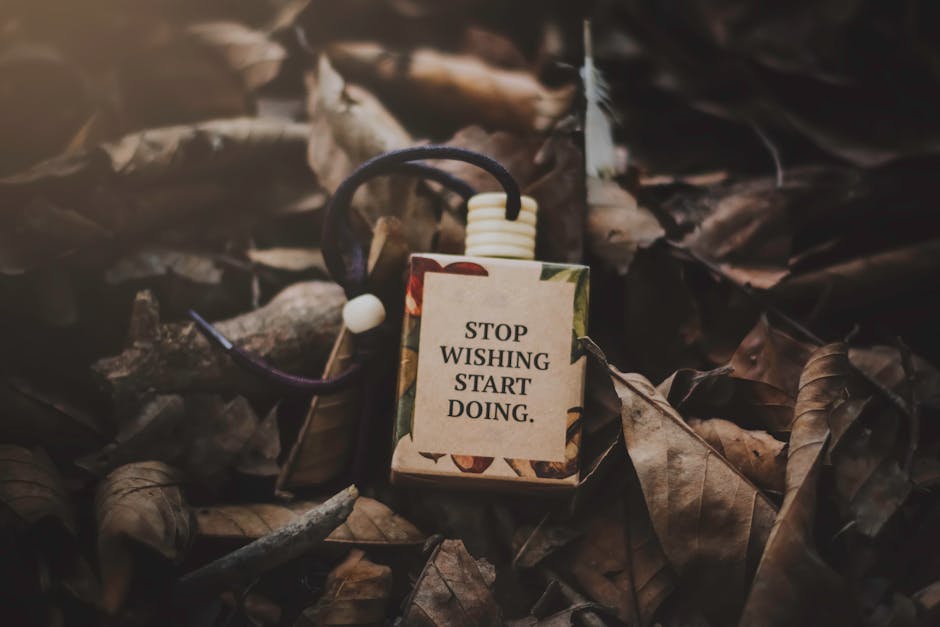Table of Contents
It’s 2025, and honestly, the weather feels like it’s doing whatever it wants these days. One minute it’s scorching, then suddenly you’re digging out a sweater you swore you’d packed away for good. But beyond just needing a different coat, have you ever really stopped to think about how much the year’s big shifts – spring, summer, fall, winter – genuinely mess with, or shape, how we live? I mean, it’s not just about what clothes you put on in the morning. It runs way deeper than that, getting right into how we feel, what we eat, even who we want to hang out with.
For ages, people have sort of gone with the flow, you know? Our ancestors, they were totally clued into the seasons for survival – planting, harvesting, hunkering down. But even though most of us aren’t out hunting for dinner in the snow anymore, that old rhythm is still there, humming under everything we do. And it’s pretty interesting, what that means for us right now.
The Big Ups and Downs of Our Mood and Mind
Okay, so let’s talk about how the light – or lack of it – messes with our heads. It’s not just in your imagination; the amount of sunshine really does a number on your brain chemicals. In my experience, when winter rolls around and it’s dark by like, four in the afternoon, it’s easy to feel a bit… flat. Like the color’s just been drained out of everything. That’s probably the whole Seasonal Affective Disorder thing, or SAD. It’s a real downer for lots of folks, making them feel sluggish and kinda blue. It’s like your body is just trying to hibernate, even if your boss still expects you to be at your desk bright and early.
Then, bam! Spring hits. And suddenly, it’s like someone turned the light back on. The days get longer, birds start chirping like crazy, and there’s this definite lift in the air. People smile more, chat more. You feel a bit more pep in your step, don’t you? It’s genuinely noticeable, that energy shift. Like, even if you’re not usually a morning person, those brighter mornings just make it a tiny bit easier to get out of bed. I think it’s pretty cool how something as simple as more daylight can just change your whole outlook.
Daylight, Dark, and What it Does to Us
When the sun sticks around longer, your body’s sleep-wake cycle, what scientists call circadian rhythms, gets a jolt. More light means less melatonin, the sleep hormone, which can make you feel more awake and, well, less sleepy during the day. In summer, with those super long days and short nights, some people actually sleep less and feel fine about it. It’s like the energy of the world just pulls you into its hustle. But then in winter, when it’s always gloomy and gets dark so fast, your body wants to pump out more melatonin. This can make you feel tired all the time, even if you’re getting enough sleep. It’s a bit of a tricky balance, and it’s definitely not the same for everyone. Some people thrive on the cozy darkness, while others basically wilt. It just goes to show how much our internal clocks are tied to the outside world.
Body Clock Shenanigans: More Than Just Sleep Cycles
It’s not only our brains playing tricks; our bodies feel it too. Each season brings its own set of physical challenges or comforts. Think about spring allergies – boom! Suddenly, everyone’s sniffling and rubbing their eyes. All that pollen bursting out, it’s a real hassle for many. And then, summer, you get more people outside, active, maybe even a bit more adventurous. That means more bumps and scrapes, sure, but also generally more physical activity, which is good for you.
Come fall, it’s flu season time, isn’t it? Suddenly everyone’s sharing germs, and you’re washing your hands like crazy. And the winter chill, it’s not just about feeling cold. For some, it makes old aches and pains worse, or just generally makes them feel less like moving. So yeah, the physical stuff, from minor sniffles to how much we actually want to move, is very much a seasonal thing. It’s kinda unavoidable.
From Sneezes to Snuggles: How Our Bodies React
Our diet, for example, changes without us even really thinking about it. In summer, you crave lighter stuff, fresh salads, berries, anything that feels cool and hydrating. It makes sense, right? It’s hot, and your body wants to cool down. But then winter comes, and suddenly, all you want is a hearty stew, some mashed potatoes, maybe a big, warm bowl of pasta. Comfort food, definitely. Your body needs more fuel to stay warm, so it naturally craves those heavier, more warming meals. It’s a primal thing, this shift in what we eat.
And exercise? That’s a huge one. In warmer months, getting outside for a run, a bike ride, or just a long walk seems so easy, almost natural. The parks are full of people doing stuff. But when it’s freezing outside, or raining, or just plain miserable, the thought of hitting the gym, let alone exercising outdoors, feels like a massive chore. We tend to get a bit more sedentary, don’t we? It’s just a natural reaction to the environment. And this can actually have a knock-on effect on our energy levels and mood. Less movement often means less happy chemicals in your brain. So, it’s all connected, how the weather impacts our cravings and our willingness to move.
Your Day-to-Day: More Than Just Sweaters and Shorts
How we dress, of course, is the most obvious one. Nobody’s wearing a swimsuit in January (unless they’re on a very specific kind of holiday). But it’s more than just insulation. Fashion cycles often follow the seasons too. Bright colors and light fabrics in spring and summer; darker, heavier textures in fall and winter. This affects everything from what we buy to how we present ourselves. It’s like a visual cue for the time of year, helping us sort of ‘tune in’ to the season.
What about our daily routines? During summer, things often feel a bit more relaxed, don’t they? Kids are out of school, family vacations are happening, work might slow down just a tiny bit. There’s more time for outdoor gatherings, late evenings. Then fall comes, and it’s like hitting a reset button. Back to school, back to stricter work schedules, more indoor activities. Winter often means nesting, fewer spontaneous outings because of the cold or the darkness. This cyclical pattern of activity and downtime is a basic part of human existence, shaping everything from traffic patterns to how busy restaurants are. It even impacts how much we spend on certain things.
The Rhythm of the Home and Hearth
Our homes really reflect the seasons too. In summer, it’s all about opening windows, maybe setting up a fan or running the AC. You want light, airy spaces. Plants might be thriving outdoors, or you bring in fresh flowers. Come fall, it’s suddenly all about cozy blankets, maybe lighting a candle that smells like pumpkin spice or something. Decor changes from light and breezy to warm and inviting.
And winter? Oh, winter. That’s when the heating bills really hit, isn’t it? You’re sealing up drafts, maybe lighting a fireplace if you’re lucky enough to have one. The focus shifts to making your home a warm, comfortable refuge from the cold outside. It’s like our homes become extensions of our seasonal needs – a cool oasis in summer, a warm burrow in winter. This also changes how we use energy, obviously, and what kind of home maintenance jobs are on the go.
Socially, the seasons really put a stamp on things. Summer is for barbecues, picnics, going to the beach, outdoor concerts. It’s when you see friends more casually, often outside. There’s a certain freedom to it. But then, as the days shorten, social gatherings move indoors. Fall brings Halloween parties and Thanksgiving. Winter’s a big one for holidays – Christmas, New Year’s, lots of family gatherings. It’s a different kind of social energy, more focused on warmth and closeness, often around food and tradition. So, our social calendars basically get booked up by the sun’s position, in a weird way.
So, What Do We Do About It? Adapting to the Turn of the Year
Look, we can’t stop the seasons from changing. That’s just how the planet works. But what’s interesting is how people, over time, have learned to adapt. It’s about more than just grumbling about the cold or celebrating the sunshine. It’s about finding ways to live well no matter what the weather’s doing. Like, if winter really gets you down, maybe investing in a light therapy lamp helps. Or if summer makes you feel sluggish, finding ways to stay hydrated and keep cool is a must.
It’s about noticing those shifts in yourself – your energy, your mood, what you feel like eating or doing – and kinda rolling with them. Instead of fighting against the seasonal pull, it’s smarter, I think, to try and harmonize with it. That might mean planning more indoor activities in winter, or making sure you get outside for those precious daylight hours. Or maybe it means knowing you’ll be super active in summer and less so in winter, and just accepting that’s okay. It’s all about listening to your body and your mind, and figuring out what works best for you as the world spins through its yearly cycle. And honestly, isn’t that just a smarter way to live anyway? Being aware of how these big, natural forces impact us can actually make our lives richer, not just more predictable.
FAQs: How Do Changing Seasons Affect Our Lifestyle?
How does daylight saving time mess with things?
Ah, daylight saving. That whole “spring forward, fall back” thing really can knock people off kilter for a bit. It’s like a mini-jet lag. Your internal clock gets confused because suddenly the sun’s rising and setting at different times than what your body’s used to, and it takes a few days to adjust. It affects sleep, energy, and just generally can make you feel a bit out of sync.
Can seasons genuinely make you more forgetful or less focused?
For some people, absolutely. Especially during those darker winter months, the lower light exposure can mess with your mood and energy, which then makes it harder to focus or remember things. When you’re feeling sluggish and a bit down, your brain’s just not working at its sharpest. It’s not just you; it’s a known thing.
Do our relationships change with the seasons?
They can, yeah. In summer, you might be more inclined to social gatherings, meeting new people, doing things outdoors. Winter often means more intimate, indoor get-togethers, sometimes more focus on family holidays. The type of activities you do together naturally shifts, which can influence the dynamics of how you connect with friends and family.
Is it true that different seasons affect what kind of food we crave?
Totally. It’s a pretty natural human thing. In hot weather, lighter, cooling foods like salads, fruits, and cold drinks feel good. When it’s cold, your body wants warmer, heartier, energy-dense foods – stews, root vegetables, baked goods. It’s a survival instinct, really, to get the right kind of fuel for the current environment.
What’s the one biggest takeaway about living with seasonal changes?
I’d say the biggest thing is just being aware. understanding that how you feel, what you crave, and even how you act isn’t always just “you”; sometimes it’s the seasons doing their thing. And once you know that, you can make little adjustments to help yourself out, whether it’s getting more light in winter or staying hydrated in summer. It’s about working with the natural rhythm, not against it.












